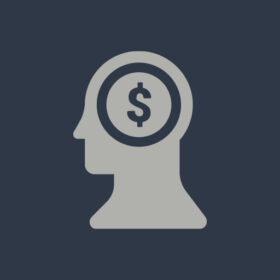The One Big Beautiful Bill Act (enacted July 4, 2025 as Public Law 119-21) significantly reforms how federal student loan repayment works. One of its central goals is to simplify repayment options and adjust income-driven plans. Key among its changes are the introduction of a new income-based plan called the Repayment Assistance Plan (RAP), alterations to the Income-Based Repayment (IBR) plan, and an overhaul of the Standard Repayment Plan.
The New RAP vs. IBR
The RAP is a newly created income-driven repayment option under the OBBBA. It becomes available starting July 1, 2026 for new borrowers, and existing borrowers will be able to opt into it or be moved into it under certain conditions by July 1, 2028.
How RAP works:
- Payments under RAP will be calculated as 1% to 10% of the borrower’s adjusted gross income (AGI). The rate increases with income.
- There is a minimum payment of $10 per month, even for very low-income borrowers.
- Borrowers receive a $50 per dependent reduction in the payment base each month.
- The repayment term for forgiveness under RAP is 30 years (i.e. after 30 years of qualifying payments, any remaining balance is cancelled).
- Other favorable features: Under RAP, interest that accrues but is not covered by a borrower’s monthly payment will be waived; and if the monthly payment reduces principal by less than $50, the government will make up the difference (to ensure slow but steady reduction) in some cases.
How IBR is changed:
- The requirement of a “partial financial hardship” is eliminated. Previously, to enroll in IBR a borrower had to show that their payment under IBR would be lower than under the 10-year standard plan; that condition is removed.
- There are two versions of IBR depending on when one took out one’s first federal student loan:
- Loans taken out before July 1, 2014 use the “old” IBR: payments are 15% of discretionary income and forgiveness occurs after 25 years.
- Loans taken out on or after July 1, 2014, but before July 1, 2026, use “new” IBR: payments are 10% of discretionary income and forgiveness after 20 years.
- IBR retains its place among the remaining income-based plans; under OBBBA, most of the other income-driven plans (SAVE, PAYE, ICR) are being phased out by July 1, 2028, leaving IBR plus RAP.
Changes to the Standard Plan
The Standard Repayment Plan, which is the fixed payment plan not tied to income, is also amended for loans disbursed after July 1, 2026:
- The repayment term will vary based on the total amount borrowed. Roughly, less than $25,000 = 10 years; $25,000–$50,000 = 15 years; $50,000–$100,000 = 20 years; over $100,000 = 25 years.
- For Parent PLUS loans issued after that date, borrowers must use the Standard Plan. RAP is not available for new Parent PLUS loans or for some consolidated loans involving Parent PLUS.
Impacts and Considerations
This restructuring means borrowers will face trade-offs:
- Those with lower incomes may benefit from RAP because of the low payment floor ($10), waived interest accrual, and longer forgiveness timeline. But longer forgiveness means more total interest unless interest is significantly subsidized.
- Higher-income borrowers may prefer new IBR, especially if they are closer to the earlier forgiveness schedule (20 or 25 years) rather than 30 years under RAP.
- Borrowers currently enrolled in SAVE, PAYE, or ICR will need to transition by July 1, 2028, or else be placed in RAP automatically if they don’t choose.
- Eligibility changes (e.g. removal of partial financial hardship) may allow more borrowers to qualify for IBR.
In summary, the One Big Beautiful Bill Act seeks to simplify the repayment structure: phasing out multiple existing income-driven plans (SAVE, PAYE, ICR), leaving primarily IBR and the new RAP for income-connected repayment, alongside a reformed Standard Plan. Borrowers will need to consider their income, how long until forgiveness, and how the changes affect interest accrual when deciding which path to choose. These changes are phased in over time (particularly in 2026 and 2028), so understanding the timelines is critical for borrowers who want to preserve favorable repayment options.
Additional Resources
- Federal Student Aid, “Federal Student Loan Program Provisions Effective Upon Enactment Under One Big Beautiful Bill Act” (Dear Colleague Letter). (FSA Partner Connect)
- Brighthorizons / EdAssist, “Impacts Federal Financial Aid and Student Loan Borrowers …” (Bright Horizons)
- NASFAA, “Federal Student Aid Changes from the One Big Beautiful Bill Act.” (NASFAA)
- Investopedia, “The ‘Big, Beautiful Bill’ Changes Student Loan Repayment …” (Investopedia)
- StudentLoanBorrowerAssistance.org, “Big Bill Means Big Changes For Student Loan Borrowers …” (Student Loan Borrowers Assistance)


